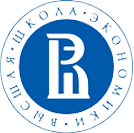The paper is actually a catalogue of indicators that can be used by governments both to measure corruption and to assess the effectiveness of anti-corruption measures.
The main objective of the authors was to propose quantitative indicators characterizing the key offences listed in the United Nations Convention against Corruption (UNCAC) such as:
- bribery of national public officials;
- trading in influence;
- illicit enrichment;
- embezzlement, misappropriation, or diversion of property or public funds;
- abuse of functions;
- obstruction of justice.
Besides corruption offences, the UNODC experts pay particular attention to specific elements of infrastructure that, in their view, are critical to an effective fight against corruption, in particular:
- merit-based public hiring;
- independence and integrity of the judiciary;
- conflict of interest;
- management of public finances;
- public procurement;
- transparency;
- electoral corruption;
- preventive measures for the private sector;
- whistleblowing;
- international cooperation etc.
The description of all indicators follows a single structure:
- name of the indicator;
- type of measure: for example, 1) perception, 2) experience, 3) formal statistical indicator etc.;
- objective of the indicator;
- brief description of the indicator;
- formula for calculating the indicator;
- responsible institution;
- sources of information, for example, official documents, surveys of population, organisations, public officials etc.;
- frequency of measurement;
- disaggregations;
- additional information.
The authors stress that the suggested indicators should be used together to avoid that the findings on corruption at the domestic level are incomplete or distorted.
The paper is currently under discussion. It will be refined in line with the comments received, considered by the 54th session of the United Nations Statistical Commission, agreed upon by domestic experts and submitted to the 10th session of the Conference of the States parties to the UNCAC.
This detailed and well-structured catalogue of indicators can become a convenient instrument for systemic corruption measurement at the domestic level. At the same time, experts point to considerable shortcomings of the suggested approach (for instance, see the analysis here), including:
- not quite clear usefulness of a number of indicators;
- link of a considerable number of indicators to official statistics that can be incomplete and in certain cases even knowingly falsified;
- difficulties in obtaining data necessary for calculating some indicators, and low probability that the time-consuming work will be conducted at the State level, particularly in the countries with a high level of corruption;
- over-emphasis on the use of average and total values that will lead to neglect of important extreme values;
- lack of attention to the use of big data to measure corruption etc.
The attention of international organisations to corruption measurement has considerably grown over the recent years.
In particular, corruption measurement was a priority of the Italian G20 Presidency in 2021 that promoted a compendium entitled “The Measurement of Corruption in G20 Countries: Overview and Best Practices”.
In 2022, the International Anti-Corruption Academy launched a Global Programme on Measuring Corruption.
This topic is traditionally in the focus of attention of researchers. For instance, the Japan Network of Anti-Corruption Researchers regularly organises round tables on specific corruption measurement instruments and challenges of their employment in different areas. There is also extensive literature on corruption measurement that can be found on this Anti-Corruption Portal.

